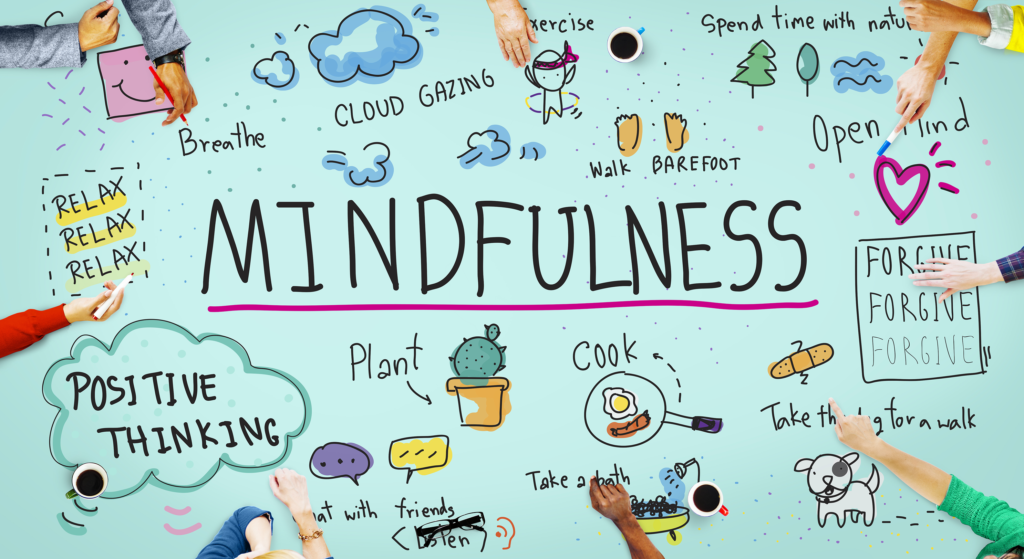This article was contributed by mindfulness-based leadership coach and inspirational speaker, Amy Jin.
Chances are, you’re reading this at home, where you’ve been social distancing or quarantining for weeks. Your daily life has undergone a great change, and new information is flooding in everyday.
The “new normal” is an oxymoron, and you may feel drained just trying to keep up. Processing your daily experience, in addition to the state of the world, is a feat in and of itself. It can be bewildering, scary, overwhelming all at the same time.
Mindfulness is the practice of paying attention to the present moment without judgment. That may sound simple, but its ability to provide us with agency, perspective, and compassion can give us exactly what we need in these uncertain times.
-
Practice radical acceptance
We can spend precious energy resisting our new reality, which can contribute to our struggle, fatigue, and suffering. If you can radically accept your state of affairs, you’ll be able to stop expending energy fighting what is.
Say to yourself, “This is where we are now. I am here. This is today. Some things are outside of my control, such as a, b, and c. I radically accept them, so that I can deal with them, move forward, and focus on what is within my control.”
You may also direct your radical acceptance towards uncertainty. Say to yourself, “I radically accept that I don’t know what might happen today, or tomorrow. I will do my best, and that is all I can do.”
-
Be your own best friend
When we go into survival mode, one thing we may lose is connection to our own needs, especially our emotional ones. Don’t let this happen. Befriend yourself. Gently ask yourself: “What do you need today? What do you need right now?” One framework to help identify your needs is Maslow’s Hierarchy of Needs.
Now that you hear your own needs, respond as you would to a best friend — without judgment, and with tenderness, love, and generosity. This is called self-compassion. Just like your friend, you are allowed to have an irrational response, or be scared. Be kind to yourself and give yourself the leeway and flexibility to be accepted exactly as you are. Then, see if you can express these needs in a healthy way. Set boundaries where you need to with others, with the news and media, and with social media.
This practice of self compassion and self care is the foundation for your ability to care for others. After you have attended to your own needs, see if you can direct your focus and generosity to others. That might be as simple as reaching out to a friend to ask how they are today, smiling at someone over video conference or in the kitchen, or simply silently sending a loving-kindness wish to someone, “May you be happy.”
-
Give space to your emotions
Whether we like it or not, and whether it’s convenient or not, we are emotional beings. Take time to process your feelings, because what you resist, persists. Fear can be immensely uncomfortable, but it cannot kill you. Call on your courage and your curiosity. And remember, emotions are data. What is your fear or anxiety here to tell you?
When you feel an emotion such as sadness or fear, try to get out of your head, and into your body. What does sadness feel like in your body? What sensations accompany it? Is it cool, or hot? Is it a tingling in your hands, or in your shoulders? Keep asking yourself, “Where do I feel this emotion?” Then see if you can sit with these physical sensations without listening to the stories of the mind. Remember that everything is changing all the time, and even the most uncomfortable emotions will eventually pass.
Try to remember that we are not our thoughts or emotions. Try saying to yourself, “Sadness is here,” instead of “I am sad.” This is how we observe our emotions, which gives us time to pause, and choose our response. Victor Frankl, survivor of the holocaust and author of Man’s Search for Meaning, summarizes this beautifully: “Between stimulus and response there is a space. In that space is our power to choose our response. In our response lies our growth and our freedom.”
Remember, you’re not alone. Feeling scared, overwhelmed, or angry are fundamental to the human experience. We all feel these emotions, it’s OK, and they will pass.
-
Stay present in THIS moment
Our minds are often in the past or in the future. We can be trapped reliving an experience like a bad movie on repeat, or imagining a doomsday future. The problem is, you can’t experience an emotion in the past – you can only experience it now. (Want proof? Try having an emotion in the past!)
So, when you catch your mind in the past or the future, stop and take a breath. Feel your toes in your socks, look at the time, and say to yourself, “It is 1pm on Thursday. I am in my bedroom.” Then do something different, like walk to a another room or take a sip of water. You can also simply try repeating the word “now” to yourself as a mantra. I do this when I’m jogging and getting winded. As painful as each step is, “now” helps me focus on the current step I’m taking, rather than the longer mile I’m attempting to finish. I find that we can bear anything for one moment.
-
Laugh
Laughter has been shown to be good for us physiologically, psychologically, and socially. Tap into this powerful medicine now. Spend your time finding things that make you laugh, and share them with others. Laughter can be a wonderful break to help release tension. That’s right, I’m actually suggesting you spend time on TikTok or YouTube. Give yourself a good laugh, and see how it makes you feel.
And if you don’t trust me, here are some articles about the power of laughter:
https://www.psychologytoday.com/us/articles/200504/laughter-the-best-medicine
Bonus Pro Tips:
- Journaling: To give space to my emotions, I meditate and journal daily. First identify the emotion/s that are present. This can take some practice, so this graph (from Pixar’s Inside Out), can help. I also love this journaling prompt from Amber Rae, author of Choose Wonder over Worry: “Dear Emotion, it’s me. You’re safe and welcome here. What are you trying to tell me?” You can also free write / free associate first thing in the morning or before bed. Just pick up a pen and a piece of paper and let your thoughts stream out, without editing or judgment. Think of this as a dump, you are flushing out your subconscious. *Done before bed, they can clear your day’s thoughts and allow you to sleep better.
- Start something new: Turn off the news and change your focus. One thing that can help you stay present is to start something new. Open a new book, watch the pilot of a new show, cook a new recipe, or begin a new project that you’ve been putting off. This will help you mark the present, and the progress will be satisfying.
- Define enough:Our culture can rob us of our ability to choose when enough is enough. Allow yourself to create limits on how long you watch Netflix, tune into the news, vent, etc. (i.e. 20 min in morning and 20 min in evening). Putting timers on activities gives you what you need whilst also giving you the freedom to step away. It can also provide you with a sense of accomplishment, versus never feeling like you’re doing enough.
Resources to Help Practice Mindfulness:
About the Author
Amy Jin is a mindfulness-based leadership coach and inspirational speaker. She works with mission-driven entrepreneurs and executives, helping them lead consciously. A passionate advocate for women, she is the co-host of Straighten Your Crown, a podcast for female founders. Her life’s mission is to reduce human suffering, and her mantra is to lead with heart.


